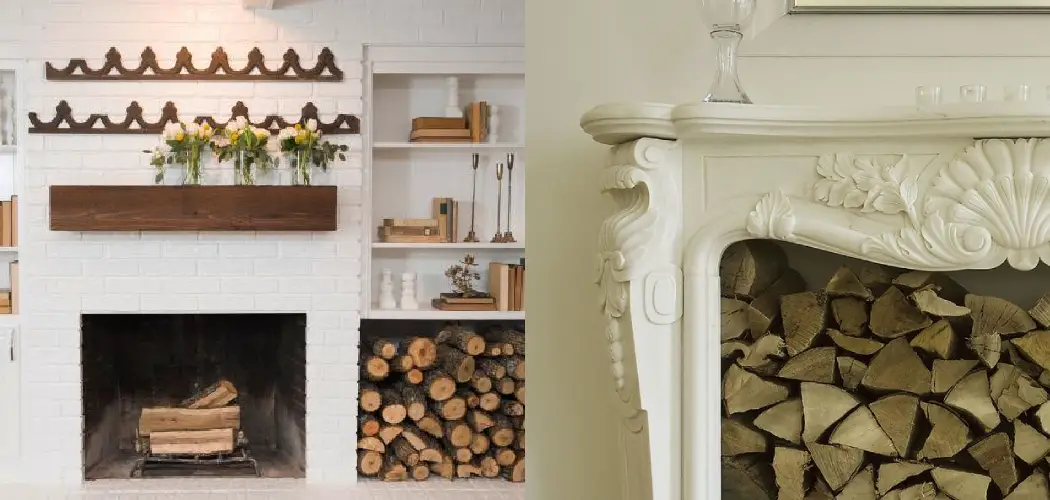There’s nothing quite like the cozy feeling of a warm fire on a cold winter night. If you’re lucky enough to have a fireplace, stacking the wood correctly is key to enjoying your fire for as long as possible. Check out these tips on how to stack firewood in fireplace.

What Is Firewood in A Fireplace?
Most people are familiar with the term “firewood,” but many don’t actually know what it is. Firewood is simply wood that has been cut into logs and then seasoned or left to dry out.
The process of seasoning firewood can take anywhere from a few months to a year, depending on the type of wood and how it is cut. Once the wood is properly seasoned, it will be much easier to light and will produce less smoke.
In addition, seasoned firewood will produce more heat than unseasoned wood, making it ideal for use in a fireplace. If you’re looking for the perfect firewood for your fireplace, be sure to ask your local hardware store or a lumberyard for help in choosing the right type of wood and seasoning it properly.
Why Should You Stack Firewood in A Fireplace?
Firewood should be stacked in a fireplace for several reasons. First, it provides a more efficient burn. Stacking the wood in a teepee or log cabin style allows for better airflow, which leads to a hotter fire that will burn more evenly.
Second, it helps to prevent sparks from escaping. Third, stacking the wood neatly in the fireplace creates a barrier containing any errant sparks. Finally, it simply looks better. A well-stacked pile of wood pleases the eye and creates a sense of order in the room.
So next time you’re building a fire, take a few extra minutes to stack the wood properly. Your efforts will be rewarded with a safer, more efficient fire.
7 Steps to Follow on How to Stack Firewood in Fireplace
There’s nothing quite like a roaring fire in the fireplace to chase away the chill on a winter’s night. But before you can enjoy that cozy warmth, you need to stack your firewood properly. Here’s how to do it:
1. Choose the Right Kind of Wood
The first step in stacking your firewood is choosing the right wood. Hardwoods like oak, ash, and maple are ideal because they burn slowly and produce a lot of heat. Softwoods like pine and cedar burn quickly and don’t put out as much heat, so they’re best used for kindling.
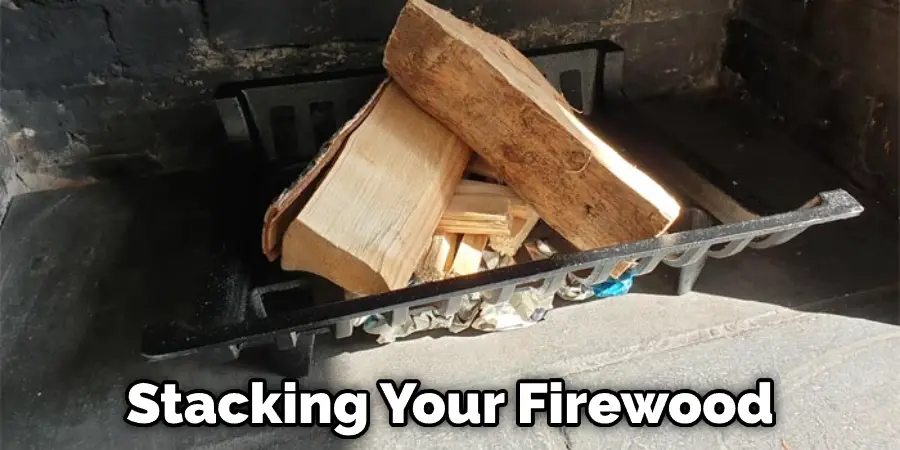
2. Find a Level Spot Near the Fireplace
Once you’ve selected your wood, it’s time to find a level spot near the fireplace to stack it. If your wood is unseasoned (wet), you’ll want to keep it as close to the fire as possible so it can dry out and be ready to burn. Any location near the fireplace will do if your wood is seasoned (dry).
3. Create a Base for Your Woodpile
Before you start stacking your wood, creating a base for your woodpile is important. This will help keep the wood off the ground and prevent it from getting too wet or dirty. You can create a base from logs to rocks to bricks. Just make sure the material you use is dry and won’t rot.
4. Start Stacking Your Wood
Now it’s time to start stacking your wood. Begin by laying two logs horizontally on your base, making sure they’re the same length. Then, place the third log on top of the first two logs perpendicular to them.
Continue this pattern, alternating between logs placed horizontally and logs placed perpendicular until your stack is as tall as you want it to be. Then, make sure that the final log is placed horizontally on top of the stack.
5. Cover the Stack with A Tarp for Protection from The Elements
Once you’ve stacked your firewood, it’s important to protect it from the elements. Covering your wood with a tarp will help keep it dry and ready to burn. Make sure to secure the tarp so that it doesn’t blow away in the wind.
6. Use a Log Splitter to Make Stacking Easier
If you find stacking your firewood too difficult, you can make the job easier by using a log splitter. A log splitter is a tool that is used to split logs into smaller pieces. This will make it much easier to stack the firewood, and it will also make it easier to burn.
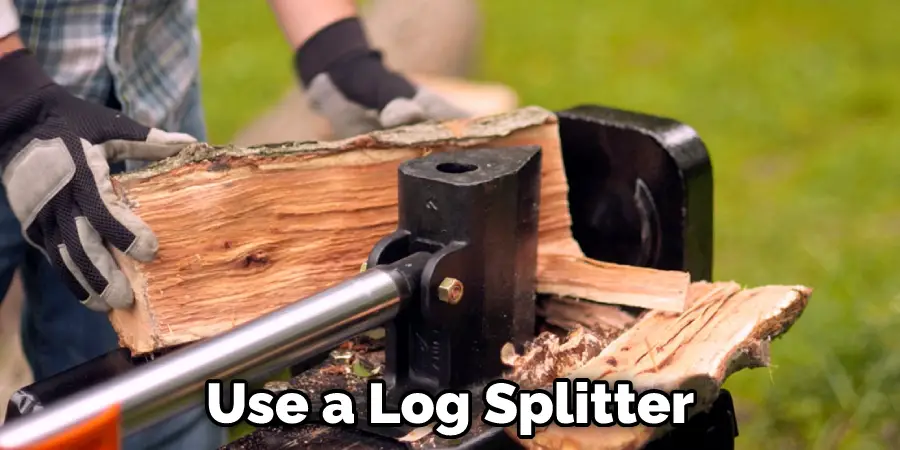
7. Enjoy Your Cozy Fire!
Now that your firewood is stacked and ready to go, it’s time to enjoy the warmth and coziness of your fireplace! So sit back, relax, and enjoy the heat from your wood-burning fireplace.
Now that you know how to stack firewood in fireplace, you’re ready to enjoy a cozy fire! Just remember to keep your wood dry, use a variety of sizes and shapes of wood, and stack it loosely to allow for good airflow. With these tips in mind, you’ll be able to keep your fireplace burning safely and efficiently all winter long!
The Dos and Don’ts of Stacking Firewood
When it comes to stacking firewood, there are a few things you should keep in mind. First, make sure that the logs are dry and free of moisture. Wet wood is more difficult to ignite and produces less heat than dry wood. Second, stack the logs in a way that allows for good air circulation. This will help to prevent the wood from rotting.
Third, if you are storing the wood outdoors, cover it with a tarp or other waterproof material. This will protect it from the elements and keep it dry. Finally, don’t forget to stack the wood in a safe place, away from any flammable materials. By following these simple tips, you can be sure that your firewood will be ready when you need it.
What Kind of Wood to Use When Stacking Firewood
Many types of wood can be used for firewood, but not all are created equal. Hardwoods like oak and maple are the best choice for firewood, as they burn hot and slow, providing a long-lasting source of heat. Softer woods like pine can also be used, but they burn quickly and are best suited for kindling.
In terms of size, it’s best to use logs that are between 18 and 24 inches long. This will ensure that the logs fit snugly in the firebox and don’t topple over when the flames start to die down. Finally, ensure that the wood is dry before adding it to the fire, as wet wood will produce a lot of smoke and make it difficult to start the fire.
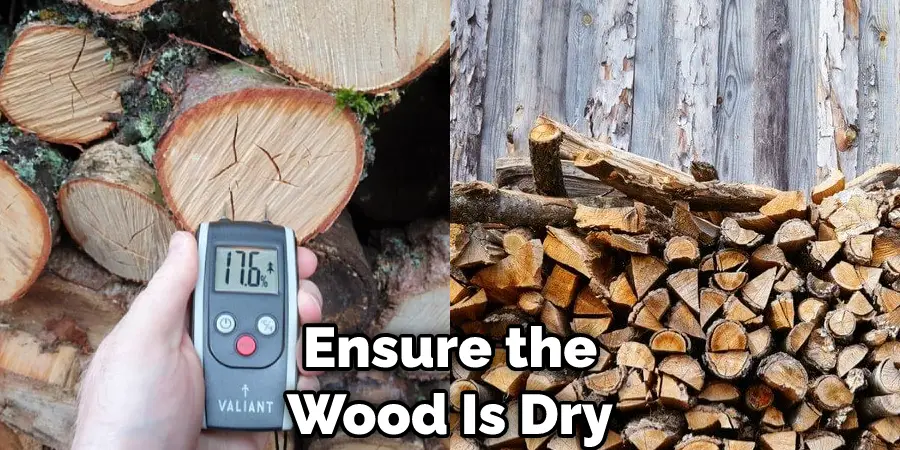
By following these simple tips, you can be sure to choose the right type of wood for your needs.
How to Store Your Firewood for the Winter
Firewood is an essential part of winter weather preparation. Storing it properly will keep it dry, insects-free, and ready to burn. The key to storing firewood is to keep it off the ground and covered. This will protect it from moisture and elements. Choose a location that is close to your home for easy access and stacking.
If you have a lot of wood, consider building a small shed or using a tarpaulin to cover the area. How you stack your wood is also important. Create a pyramid or tepee shape with smaller pieces at the bottom and larger pieces at the top. This will allow for good airflow and prevent settling. Finally, make sure to use a log rack or similar structure to keep the wood off the ground.
By following these simple tips, you can be sure that your firewood will be dry and ready to use all winter long. Keep reading for more information about how to stack firewood in fireplace.
Benefits of Stacking Firewood in Fireplace
Firewood is an essential part of any fireplace. Not only does it provide the fuel for the fire, but it also helps to create the perfect environment for a cozy evening by the fireplace. One way to get the most out of your firewood is to stack it in the fireplace. This may seem like a simple task, but there are actually several benefits to doing so.
First, it helps to create a draft that will feed oxygen to the fire and keep it burning brightly. Second, it prevents sparks from flying out of the fireplace and potentially starting a fire. Finally, adding more wood to the fire as needed makes it easier. So next time you’re building a fire, stack your wood in the fireplace for best results.
How to Maintain Your Stacked Firewood, so It Lasts Longer and Works Better in Fireplace
Firewood is stacked in a way that makes it look like it would be easy to take care of. However, there are a few things you need to do to make sure your wood lasts longer. The first thing is to make sure the wood is off the ground. This will help protect it from moisture and insects. The next thing is to cover the top of the woodpile with a tarp.
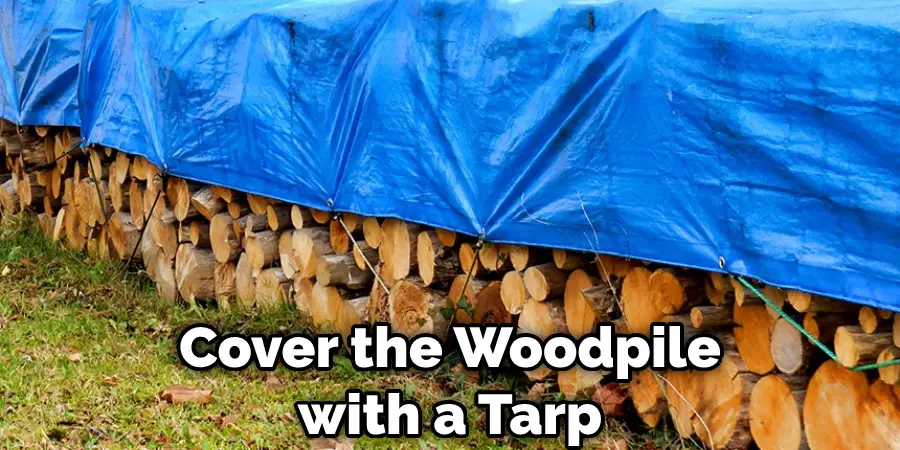
This will help keep the sun and rain off the wood. Finally, you must regularly check the woodpile for signs of rot or insect infestation. If you find any, remove the affected pieces and treat the rest of the wood pile with a pesticide. By following these simple tips, you can ensure that your firewood lasts longer and works better in your fireplace.
Conclusion
The next time you’re stacking firewood in your fireplace, remember to use the techniques we’ve outlined, and you’ll have a warm and toasty home all winter long. Thanks for reading our post about how to stack firewood in fireplace. Have any other tips for stacking wood? Please share them with us in the comments below!

